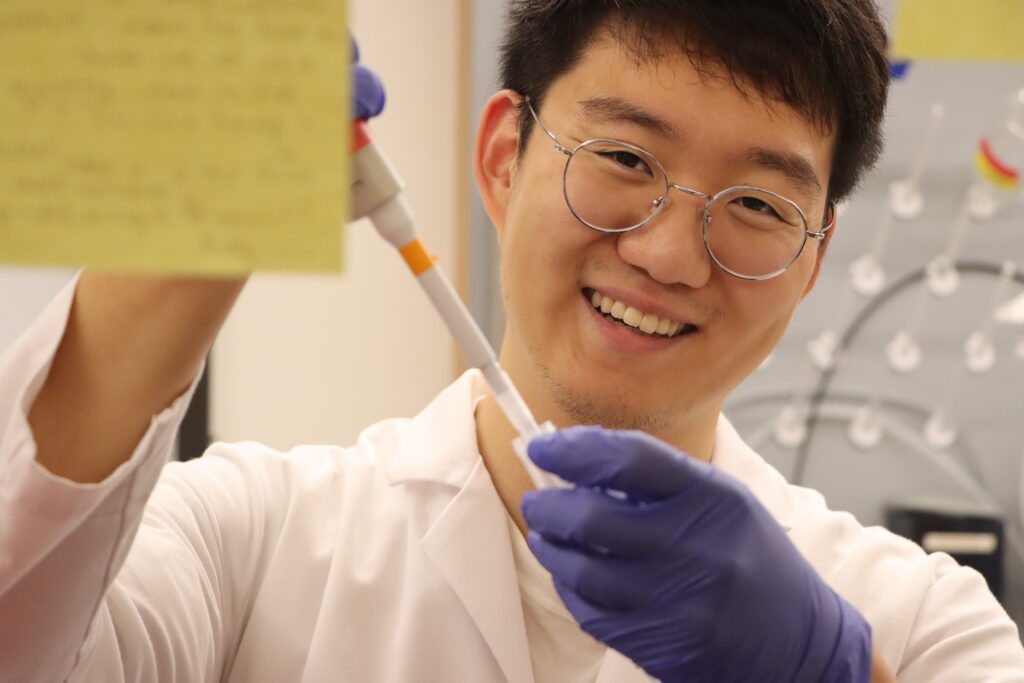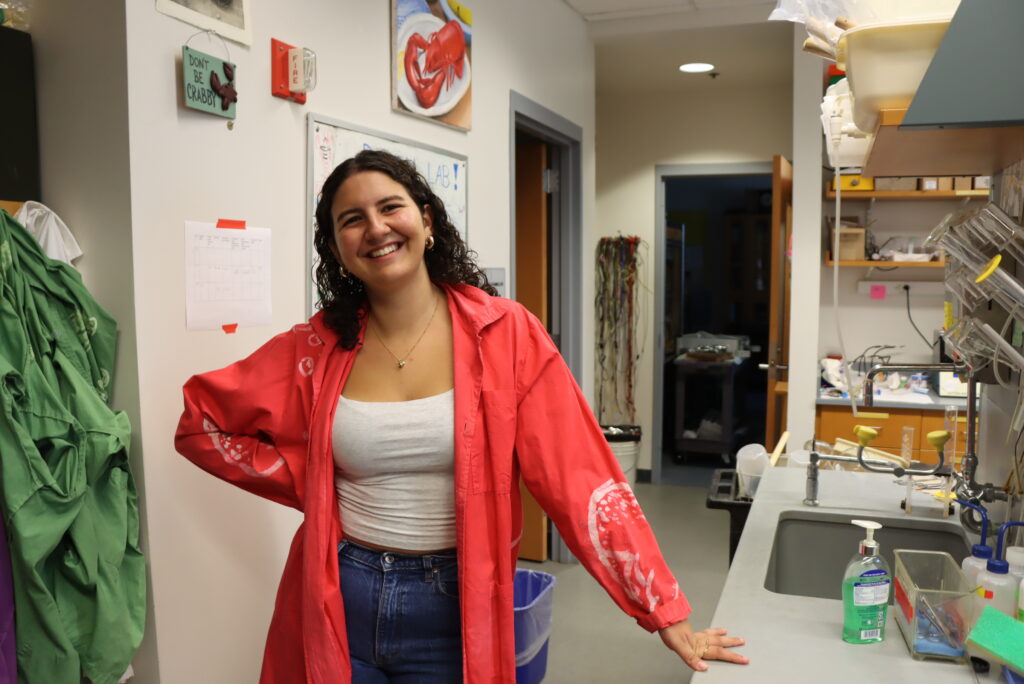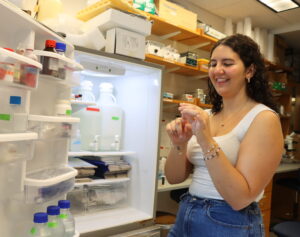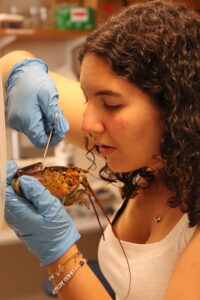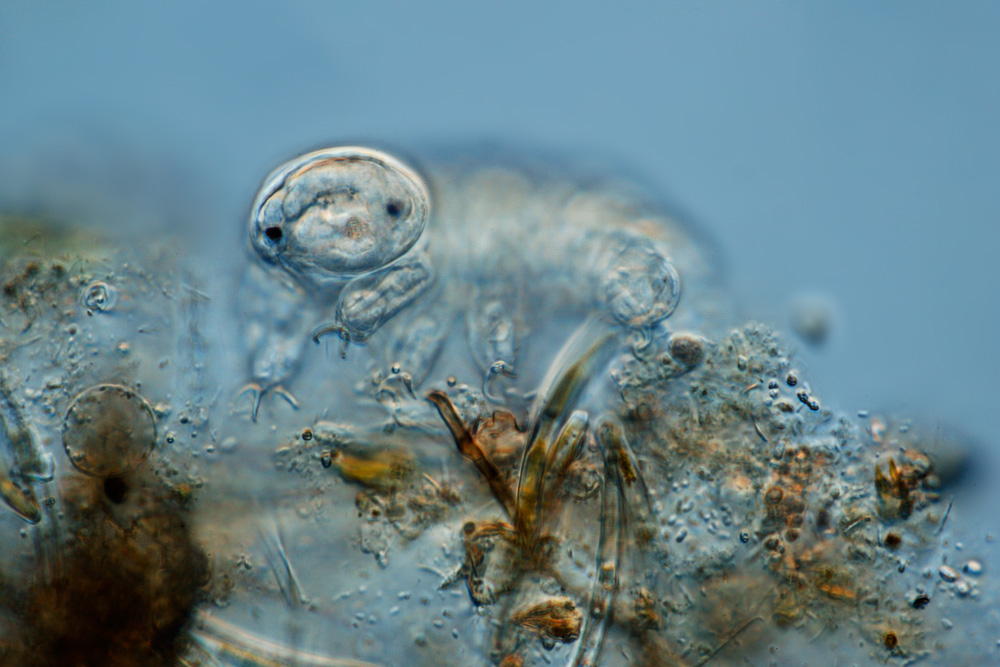“I give a lot of credit to my mentors, past and present, who have shown me how I should be thinking about unexpected results” – Daniel Kang
Some teachers care so deeply for what they teach, it is almost as if their passion osmotically transfers to their students. This was certainly the case for Daniel Kang when Mrs. Hahn ignited a water jug and propelled it from one end of his high school chemistry classroom to the other, or when she used ethanol to animate a fiery pumpkin for Halloween. Just like the jug and the pumpkin, Mrs. Hahn’s eyes lit up when she taught science. Her passion inspired Daniel to plot his own course toward becoming a scientist. Now, Daniel is a biochemistry major at Bowdoin College, where he works in Professor Dube’s lab as a senior researcher. Though Daniel is not lighting water jugs or pumpkins on fire, he is applying Ms. Hahn’s chemistry teachings to his research project on sugar pathways in bacteria.

When I asked Daniel why he focuses on sugars, he explained that bacteria need them to survive. It turns out, glucose, sucrose and fructose – the simple sugars with familiar names – are not alone under the sugar umbrella; there are over 700 sugar “species”. Bacteria absorb the simple ones as building blocks and synthesize more complicated chains of sugar called glycans. They place these glycans on their membranes, which allows them to evade our immune system and invade our bodies.
In the lab, Daniel adds fluorescent tags to the simple sugars bacteria absorb. Then, he cuts bacteria up into parts to see where fluorescent sugars end up and in what amounts. This allows him to map out sugar transport throughout the bacteria. With that information, scientists in pursuit of new antibiotics might develop mechanisms to disrupt sugar movement. For example, if we know the mechanisms behind glycan synthesis, we may be able to prevent bacteria from producing the complex sugar molecules they need to hide from our immune system.

“Eventually I hope to become a physician scientist – to both attend to patients, and contribute to science”
Through his project, Daniel is learning what it means to be flexible in the face of unexpected results. For example, a couple weeks ago, he ran an experiment to determine whether lower temperatures would slow down sugar transport. Given that coldness slows down molecular processes, he expected sugar transport to be slower as well. Instead, he observed the opposite; under colder conditions, sugar transport sped up. While reflecting, Daniel admitted these kinds of results are confusing. Yet, he tries to see the unexpected as a moment of reflection and redirection. With experience, he hopes to become more patient and open to identifying new approaches to problems as they arise.
